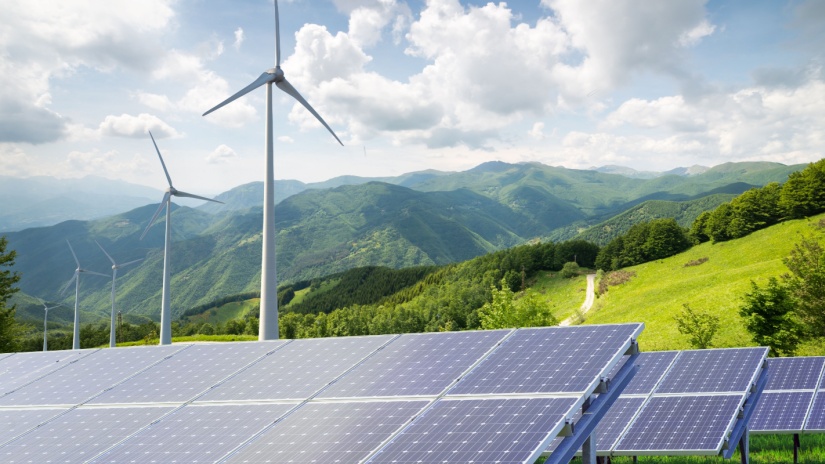Knowledge Centre
Which direction is best for solar panels in Australia?

There was once a time that choosing the direction for solar panels was simple: with high feed-in tariffs and costly panels, orienting them north was the best way to maximise electricity production and earn the most from those tariffs.
Now, the solar landscape has changed significantly, with feed-in tariffs having decreased, and solar panels are now much more affordable than they ever have been. The focus has shifted to maximising self-consumption—using as much of the solar energy your system generates as possible, rather than depending on grid electricity. This is key to reducing your electricity bills.
Generating your own solar power is more cost-effective than getting a minimum payment for excess energy sent to the grid. With higher grid electricity prices and lower feed-in tariffs, optimising self-consumption has become increasingly important.
When installing solar panels, you must consider long-term savings, panel types and brands, the number of panels needed, and choosing the right installer. However, one critical aspect remains: the best orientation for your panels.
Since the sun moves throughout the day, positioning your panels correctly is crucial to make the most of available sunlight. So, what’s the optimal direction for your solar panels?
Why is solar panel direction important?
Properly positioning your solar panels is essential for their efficiency since they need direct sunlight to work well. To get the most out of your solar panels, you need to carefully choose their placement and angle.
The angle of your panels affects how much energy they can produce and how much you can save on your electricity bills.
Factors like the strength of your roof and any shade from trees might affect the best placement for your panels. Your individual situation will determine the optimal direction for your solar panels.
Solar installers can help you design a setup that fits your specific needs and energy usage. If you’re considering solar panels, be sure to read ratings and reviews to find reliable solar panel installers.
Is there a 'best direction' for solar panels to face?
In Australia, solar panels usually perform best when facing north, as this direction gets the most sunlight during midday. However, this isn’t always ideal due to various factors:
- Shading from nearby trees or buildings can block sunlight and reduce efficiency.
- In areas with frequent morning clouds, west-facing panels might capture more sunlight.
- If you use most of your electricity in the mornings and evenings, having some panels facing east and west can help you make the most of the sun during these times.
When installing solar panels, the direction may be limited by your roof’s design. If you’re building or renovating, consider the best orientation for future solar panels to optimise their performance.
The best direction for solar panels to maximise self-consumption depends on your household’s electricity usage patterns. Here’s a simple guide to different orientations and who they might suit:
North-facing panels
This way is ideal for households that are home during the day. They generate the most electricity overall, making them great for those who can use appliances like washing machines and pool filters during daylight hours.
West-facing panels
These produce about 15% less electricity than north-facing panels, with peak output in the afternoon. This direction is good for homes with high summer cooling needs or those who return in the afternoon. They’re also beneficial if you have a variable feed-in tariff that increases in the late afternoon.
North-west panels
These generate around 5% less electricity than north-facing panels, with a production pattern between north and west orientations. They offer a bit more output in the afternoon and slightly less in the morning.
East-facing panels
Similar to west-facing panels in overall production, but they generate more electricity in the morning and less in the afternoon. This direction is suitable for households with high morning energy use, such as electric heating.
North-east panels
Produce about 5% less than north-facing panels, with production levels between north and east orientations.
East/west split
Panels facing both east and west provide a more consistent electricity output throughout the day, producing around 15% less than north-facing panels. This setup is good for households with energy needs spread throughout the day.
South-facing panels
Typically, the least efficient, producing about 30% less energy than north-facing panels in Sydney, but can still be worthwhile due to lower costs. They perform better in summer, which can benefit those in warmer climates.
Combining directions
You can place panels in various directions to suit your roof and energy needs. For example, mixing north and west-facing panels can yield similar results to north-west panels.
The ideal placement for solar panels in Australia
There are several considerations for the best solar panel placement for your home. These are:
- Use a north-facing roof: In Australia, north-facing roofs get the most direct sunlight all day long. Installing solar panels on a north-facing roof will help you get the most out of your solar energy system.
- For best performance, solar panels in Australia should generally be tilted at 30 to 35 degrees. This angle helps capture the most sunlight. However, the ideal tilt can vary by location, so you might want to check with a solar expert or use online calculators to find the best angle for your specific area.
- Minimise shading to maintain high efficiency because even minor shading can reduce solar panel performance. Make sure to trim or remove any trees or objects that could block sunlight from reaching your panels.
- Australia's climate varies greatly, from tropical in the north to temperate in the south. Think about your local climate when placing solar panels. In hotter areas, leaving a small gap between the panels and the roof can help with airflow and prevent overheating.
- Solar panels can be mounted on rooftops, on the ground, or in solar carports. Work out the needs of your property to choose the best mounting option based on available space and your needs.
- Be aware of local regulations and guidelines for solar panel installations. Some areas or homeowners’ associations may have specific rules about where and how you can install panels.
Should solar panels on flat roofs be tilted?
In short, yes, solar panels on flat roofs are often tilted, but as for should? No, it’s not always necessary. In places close to the equator, like northern Australia, the sun is high in the sky, so a flat setup might work well. If your roof space is limited, you might have fewer options for tilting your panels.
For most locations, tilting solar panels to match your latitude can boost their performance. A slight tilt is usually added to help rainwater drain off, so completely flat panels are uncommon.
Can everyone tilt their panels north?
The answer is no. Some homeowners install their solar panels facing west because of their roof’s layout. Usually, panels are aligned with the roof to avoid shade.
If trees or buildings cast shadows on part of the roof, it’s best to place the panels on the unshaded side, whether it’s east, north, or west. With the cost of solar batteries dropping, it's now more practical to cover the whole roof with panels, no matter which direction they face. The goal is to store enough energy and cut down on energy costs.
Does the direction of solar panels matter?
Yes, the direction your solar panels face is important because it affects how much sunlight they get and how much you can save on your energy bills.
To get the best results, you need to think about both the direction and angle of your panels. However, if your roof can't support a certain direction or if trees block the sun, you might need to adjust your plans.
How technology has improved solar panel placement
The placement of solar panels is crucial for their efficiency, much like choosing the right location is essential in real estate. Advances in solar technology have greatly improved how panels are positioned, offering more flexibility for homeowners.
In the past, solar panels were most effective when installed facing true south, and in areas with plenty of sunlight. This made solar panels less practical for homes not facing south or in regions with frequent rain or clouds, as the potential savings often didn't outweigh the costs.
Today’s technology has changed this. Solar panels can now be installed on roofs or the ground, facing east or west, and still capture a significant amount of energy. This flexibility helps reduce electricity bills and lowers overall energy use.
Ready to go solar?
In the end, the best direction for your solar panels depends on your home and specific situation. It's a good idea to talk to your solar installer, who can help you set up a system that works best for you.
Connecting with the team at Compare Energy is going to start you on your way to getting the best possible solar energy plan. If you already have solar panels installed at the correct tilt, but you’re looking to maximise your energy bills and efficiency, give our team a call on 1300 790 106.

